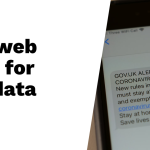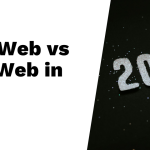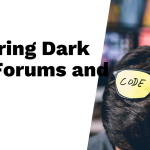Dark web monitoring is the process of scanning the hidden corners of the internet for any information related to a business, like compromised credentials or leaked data. This practice is critical for organizations as it helps in detecting breaches early, allowing for a proactive response. Key features of dark web monitoring tools include threat intelligence, hunting, rapid incident response, and integration with existing security platforms. Benefits are continuous surveillance and early detection which aid in reputation management and regulatory compliance. Popular tools like CrowdStrike Falcon and ZeroFox utilize AI to analyze dark web patterns but face challenges like access limitations and resource demands. Ultimately, effective dark web monitoring is essential for any robust cybersecurity strategy to safeguard against potential threats.
Table of Contents
- What is Dark Web Monitoring?
- Why Businesses Need Dark Web Monitoring
- Essential Features of Monitoring Tools
- Advantages of Dark Web Monitoring
- Leading Dark Web Monitoring Tools
- The Mechanics of Dark Web Monitoring
- Challenges Faced in Dark Web Monitoring
- Integrating Dark Web Monitoring into Your Cybersecurity Strategy
- Frequently Asked Questions
1. What is Dark Web Monitoring?
dark web monitoring is the process of scanning hidden parts of the internet to find compromised data related to an organization. This includes searching for stolen credentials and sensitive information that may be sold or traded. Since the dark web is not indexed by standard search engines, accessing this information can be challenging, making it essential for businesses to have effective monitoring in place.
Organizations utilize dark web monitoring to safeguard both customer data and their own assets by identifying potential breaches early. Monitoring tools can track various types of data including passwords, email addresses, and personal information. When sensitive information is discovered, alerts can be generated, enabling rapid response to threats. Some services even offer real-time alerts, ensuring that businesses can act swiftly to mitigate risks.
In addition to detecting compromised data, dark web monitoring can help identify brand impersonation and fake accounts using stolen credentials. Many monitoring solutions also provide historical data analysis, allowing companies to understand past breaches and vulnerabilities, thereby improving their cybersecurity posture. This proactive approach to cybersecurity emphasizes prevention over mere response, making dark web monitoring a vital component in protecting businesses from emerging threats.
2. Why Businesses Need Dark Web Monitoring

Businesses are increasingly under threat from cybercriminals who take advantage of leaked information. Dark web monitoring plays a crucial role in helping organizations detect potential breaches early, allowing them to respond proactively before issues escalate. By scanning the dark web for compromised credentials and leaked data, companies can gain insights into their vulnerabilities and adjust their security measures accordingly.
This type of monitoring not only supports risk management strategies but also keeps businesses informed about the current threat landscape relevant to their industry. With real-time data from the dark web, organizations can prioritize security measures effectively, enhancing their overall cybersecurity posture. For instance, a company might discover that its competitors are facing similar threats, prompting them to strengthen their defenses.
Moreover, maintaining customer trust is vital in today’s digital age, and dark web monitoring aids in ensuring that sensitive information is protected. Regular monitoring also helps meet compliance requirements across various industries, which is increasingly important as regulations evolve.
Immediate alerts from monitoring systems enable businesses to take swift action, mitigating potential damage from breaches. Additionally, in the event of a security incident, dark web monitoring can provide context about the threats faced, enhancing the investigation process. When combined with other security measures, dark web monitoring becomes an integral part of a comprehensive cybersecurity strategy.
3. Essential Features of Monitoring Tools
Effective dark web monitoring tools offer a variety of essential features that significantly enhance an organization’s security posture. Automated scanning of the dark web is a key feature, as it minimizes manual effort and ensures that potential threats are identified quickly. Integration with existing security platforms is also crucial, allowing for a more cohesive defense strategy. Rapid incident response capabilities are vital, ensuring that alerts trigger immediate action when a threat is detected. Additionally, threat intelligence features provide organizations with insights into the nature of the threats found, helping to contextualize the risks. User-friendly dashboards are important for security teams, offering clear insights and reports that can facilitate quick decision-making. Some tools even include historical data analysis, allowing organizations to track trends over time and adapt their strategies accordingly. Customizable alerts enable businesses to set parameters based on their specific risk tolerance, ensuring that they are only notified about the most relevant threats. Collaboration features further enhance the response process, enabling teams to work together efficiently when addressing threats. Data encryption is another critical feature, as it helps to secure sensitive information during monitoring. Finally, regular updates and support from service providers are vital for maintaining the efficacy of these monitoring tools.
- Effective tools provide automated scanning of the dark web, reducing manual effort.
- Integration with existing security platforms enhances overall effectiveness.
- Rapid incident response capabilities ensure that alerts lead to immediate action.
- Threat intelligence features help organizations understand the nature of threats found.
- User-friendly dashboards provide clear insights and reports for security teams.
- Some tools offer historical data analysis to track trends over time.
- Customizable alerts allow businesses to set parameters based on their risk tolerance.
- Collaboration features help teams work together efficiently when responding to threats.
- Data encryption ensures that sensitive information remains secure during monitoring.
- Regular updates and support from service providers are vital for maintaining efficacy.
4. Advantages of Dark Web Monitoring
Dark web monitoring offers several advantages that can significantly enhance a business’s cybersecurity posture. Continuous surveillance provides organizations with peace of mind, ensuring they are aware of any potential threats to their data. Early detection of compromised information can minimize damage, allowing businesses to address issues before they escalate. Additionally, effective monitoring plays a critical role in reputation management; by acting quickly, companies can mitigate risks that might harm their standing with clients and stakeholders.
Moreover, regulatory compliance is supported through documented, proactive monitoring efforts, which demonstrate a commitment to data security. The ability to track multiple data points helps organizations identify complex threats that may not be apparent at first glance. It can also reveal potential insider threats and fraud attempts, enabling a more comprehensive security strategy.
Implementing dark web monitoring fosters a culture of security awareness within the organization. Businesses can leverage insights gained from monitoring to educate employees about potential threats, creating a more informed workforce. Regular reporting to stakeholders and clients showcases accountability and diligence in safeguarding sensitive information. Ultimately, these advantages allow businesses to operate with a higher level of confidence in their cybersecurity measures, knowing they are actively protecting themselves against emerging threats.
5. Leading Dark Web Monitoring Tools
dark web monitoring tools are essential in safeguarding businesses against potential threats lurking beneath the surface of the internet. CrowdStrike Falcon stands out with its advanced threat intelligence and rapid incident response capabilities, ensuring organizations can react swiftly to any detected threats. Rapid7 complements this with its comprehensive monitoring and strong vulnerability management features, allowing businesses to stay ahead of potential security gaps. ZeroFox takes a unique approach by specializing in social media and brand protection, focusing on threats that can damage an organization’s reputation in the digital space. Recorded Future integrates threat intelligence seamlessly, helping organizations better understand the risks they face in real-time. Other notable tools like Terbium Labs and Digital Shadows also provide unique features tailored to different business needs. Many of these tools offer customizable pricing models, making them accessible to various business sizes, and some even provide free trials for companies to evaluate their effectiveness before making a commitment. User reviews and case studies are valuable resources for assessing each tool’s performance. Additionally, integration capabilities with SIEM and SOAR solutions can enhance the overall effectiveness of these monitoring tools. Regular updates and community support are crucial factors to consider when selecting a dark web monitoring tool, as they ensure the tool remains relevant and effective in a constantly evolving threat landscape.
| Tool Name | Key Features | Pricing Model | Trial Availability |
|---|---|---|---|
| CrowdStrike Falcon | Advanced threat intelligence, Rapid incident response | Customizable pricing | Yes |
| Rapid7 | Comprehensive monitoring, Vulnerability management | Customizable pricing | Yes |
| ZeroFox | Social media and brand protection | Customizable pricing | Yes |
| Recorded Future | Integrated threat intelligence | Customizable pricing | Yes |
| Terbium Labs | Unique features for data monitoring | Customizable pricing | Yes |
| Digital Shadows | Focus on brand protection | Customizable pricing | Yes |
6. The Mechanics of Dark Web Monitoring
Dark web monitoring operates through sophisticated tools that utilize web crawlers to scour hidden areas of the internet for compromised data. These tools gather information from a variety of sources, including forums and marketplaces where stolen data might be traded or discussed. The collected data is then analyzed using AI and machine learning, which helps identify patterns and emerging threats that may not be immediately evident.
Alerts are generated based on specific keywords or types of data, allowing organizations to tailor their monitoring to their unique needs. For instance, if a company’s credentials are leaked, the monitoring system can quickly notify them to take action. Some advanced tools even employ natural language processing, enabling them to understand the context of conversations regarding stolen data, which can provide deeper insights into potential risks.
The effectiveness of these monitoring tools heavily depends on the quality of the data they can access, emphasizing the importance of continuous updates to the algorithms used. This ensures that the monitoring tools can adapt to the ever-changing landscape of the dark web. Collaborating with law enforcement can further enhance threat understanding, as they can provide valuable insights into ongoing investigations.
Moreover, the data collected through dark web monitoring can be instrumental in threat modeling and future prevention strategies, equipping organizations with the knowledge they need to safeguard their assets. Regular reports generated by these tools allow businesses to assess their risk landscape over time, helping them make informed decisions about their cybersecurity posture.
7. Challenges Faced in Dark Web Monitoring
Dark web monitoring comes with several challenges that can impede its effectiveness for businesses. One of the primary issues is access limitations, which often restrict the ability to gather relevant data. The dark web is not easily navigable, and companies may struggle to find the specific information they need. Legal and ethical considerations also play a significant role; organizations must be cautious to avoid infringing on privacy laws while monitoring potentially sensitive information.
Resource requirements can be a barrier for many smaller organizations. Effective monitoring often demands significant investment in tools and technology, which may not be feasible for those with tighter budgets. The dynamic nature of the dark web further complicates these efforts, as threats can evolve rapidly, making it difficult for teams to keep up.
Additionally, false positives can lead to alert fatigue, overwhelming security teams with unnecessary notifications. This not only distracts from genuine threats but can also diminish the team’s overall efficiency. Staying informed about new dark web platforms and technologies is essential but poses its own challenges, especially in a landscape that is constantly shifting.
The need for skilled personnel to interpret the data adds another layer of difficulty, as many organizations may lack the expertise required to analyze the information gleaned from dark web monitoring. Furthermore, integration with existing security measures can sometimes be complex, creating additional work and potential for oversight. Finally, data privacy concerns must be taken into account, particularly when monitoring personal information, which can lead to reputational risks if not handled properly.
8. Integrating Dark Web Monitoring into Your Cybersecurity Strategy
To effectively integrate dark web monitoring into your cybersecurity strategy, start by assessing your current security measures to identify potential gaps. This will help you understand where dark web monitoring can add value. Next, select a monitoring tool that fits your organization’s specific needs and industry requirements, as not all tools offer the same features or focus areas. Once you have the tool in place, establish clear protocols for responding to alerts generated by the monitoring software. This ensures that your team knows how to act swiftly and effectively when a threat is detected.
Regular training for employees is crucial, emphasizing the importance of monitoring and data protection. This fosters a culture of awareness around cyber threats, encouraging proactive behaviors such as reporting suspicious activities. Integrate the insights gained from monitoring into your risk assessments and security planning processes to enhance overall security posture.
Documentation of monitoring efforts is essential for demonstrating compliance and accountability, especially as regulations around data protection become stricter. Collaborate dark web monitoring with other security measures, like firewalls and intrusion detection systems, to create a comprehensive defense strategy. Consider conducting periodic reviews of the effectiveness of your monitoring efforts to adapt to the ever-changing threat landscape. Finally, engage key stakeholders in understanding the value of dark web monitoring, making it a shared priority across the organization.
Frequently Asked Questions
1. What is dark web monitoring software and how does it work?
Dark web monitoring software is a tool that helps businesses check if their sensitive information, like passwords or credit card numbers, is being sold or shared on the dark web. It scans hidden parts of the internet to find this information and alerts businesses if there’s a risk.
2. Why should businesses care about the dark web?
Businesses should care about the dark web because it can be a place where stolen data, like customer information or trade secrets, is traded. Protecting this information helps prevent identity theft, fraud, and damages to their reputation.
3. How can dark web monitoring software benefit my business?
Using dark web monitoring software can benefit your business by identifying potential threats before they turn into serious issues. It allows you to take action quickly, which can protect your customers and maintain trust.
4. What types of information can dark web monitoring track?
Dark web monitoring can track various types of information, including email addresses, login credentials, credit card numbers, and even company-related documents and data.
5. Is dark web monitoring software easy to use?
Most dark web monitoring software is designed to be user-friendly, allowing businesses to easily set up alerts and access reports. Many solutions also offer support and resources to help you understand the findings.
TL;DR Dark web monitoring involves scanning the dark web for compromised credentials and leaked data relevant to an organization. It is crucial for businesses to detect potential breaches early and address them proactively. Key features of monitoring tools include threat intelligence, threat hunting, rapid incident response, and integration with security platforms. The benefits of dark web monitoring encompass continuous surveillance, early detection, reputation management, and regulatory compliance. Popular tools in this area are CrowdStrike Falcon, Rapid7, ZeroFox, and Recorded Future. The monitoring process employs AI and machine learning to analyze patterns and generate alerts. However, challenges such as access limitations and resource requirements can hinder effective monitoring. Integrating dark web monitoring into a wider cybersecurity strategy is essential for safeguarding against cyber threats.





